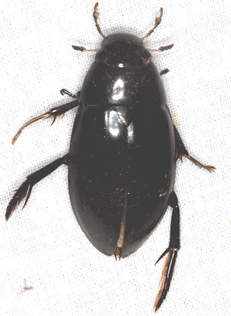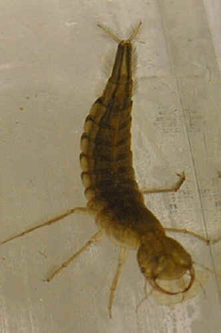Research Article
Volume 2 Issue 1 - 2017
Preliminary observation of large water beetle (Water tiger) Hydrophilus latipalpus (Castelnau, 1840) in Brackishwater farm in Chennai coast, India (12° 49’ 38.41” N 80° 13’ 52.07’E)
1Tilapia Project- Hatchery Technical and Head, Victoria Treasures Limited, BUGABO BAY, GARUGA on Victoria Lake, Kampala, Uganda, East Africa
2Fisheries College and Research Institute, Tamil Nadu Fisheries University, Chennai, Tamil Nadu, India
2Fisheries College and Research Institute, Tamil Nadu Fisheries University, Chennai, Tamil Nadu, India
*Corresponding Author: T Vaitheeswaran, Tilapia Project- Hatchery Technical and Head, Victoria Treasures Limited, BUGABO BAY, GARUGA on Victoria Lake, Kampala, Uganda, East Africa.
Received: October 26, 2017; Published: November 10, 2017
Abstract
The present investigation of this species Hydrophlus latipalpus (Castelnau, 1840) at Chennai, East-coast of India, studies revealed that during the month of Jan-May 2015, it has been affecting finfish and shellfishes of various pond at Vaniyanchavadi, Brackishwater Research Centre of Chennai coast, Tamil Nadu Fisheries University, Tamil Nadu, India. It was recorded the first kind of water beetle belonging to the Family Hydropilidae. It has been preventable the largest water beetle and it have been conserve the operational cost of brackishwater form, not-even the Chennai coast, entire South-east-coast of India.
Keywords: Hydrophlus latipalpus- Family; Hydropilidae- recorded – Chennai Coast – India
Introduction
India has a large and diverse beetle fauna, many of which are rarely and seasonal occurrence of casual observers and due to climatically global changes. The large water beetle ‘giants’ fall into this category because, although they are all tropical and sub-tropical spread and locally abundant, some knowledge of their life cycles and habits is required to reliably see them in the wild condition. The largest beetle is Chennai coast of Tamil Nadu is entirely the seasonal different. The size range has been observed from 20-45 mm Hydrophlus latipalpus (Castelnau, 1840) [Figure 1] is our largest water beetle at Vaniyanchavadi coast of Chennai is located between latitude (12° 49’ 38.41’N and 80° 13’ 52.07’E) Southeast coast of India. A hydrophilid rather than a dytiscid and a beauty, there are seventeen species, one is very dominant species Hydrophilus latipalpus viz., H. acuminatus, H. albipes, H. ater, H. aterrimus, H. bilineatus, H. brevispina, H. infrequens, H. insularis, H. macronyx, H. occulatus, H. ovatus, H. pedipalpus, H. piceus, H. picicornis, H. triangularis and H. wattsi (Simon Fearn, 2011).This species is a vegetarian and lives in brackishwater, lagoons, marshes and dams. Although common and widespread, it is rarely and seasonal occurrence of this species in aquatic habits. This species having special adaptation, during the day, the momentarily glimpsed as it come to the surface to capture of fresh bubble of air. However, during the night time, it can often be observed moving around in shallow water on the edge of dames and is easily caught in a net. During summer, usually on hot, humid nights, large dispersal flights can occur between water bodies and large numbers can be attracted to ultra-violet light. It should be perhaps pointed out in closing that both Prionids have very powerful and razor sharp jaws. Careless handing can result in a painful nip that can draw blood. The present observation of this species at Chennai, East-coast of India, studies showed that during the month of Jan-May 2015, it has been affecting finfish and shellfishes of various pond at Vaniyanchavadi, Brackishwater Research Centre of Chennai coast, it was recorded the first kind of water beetle belonging to the genus Hydropilidae. It has been preventable the largest water beetle and it have been conserve the operational cost of brackishwater form, Tamil Nadu Fisheries University, Chennai, not-even the Chennai coast, entire South-east-coast of India.
Phylum: Arthropoda
Class: Insecta
Order: Coleoptera
Family: Hydrophilidae
Genus: Hydrophilus
Species: latipalpus
Phylum: Arthropoda
Class: Insecta
Order: Coleoptera
Family: Hydrophilidae
Genus: Hydrophilus
Species: latipalpus
Distribution and Habitat
Water scavenger beetles- Brackishwater ponds and lakes, near vegetation; slower sections of backwaters, streams and rivers. It has distribution of Australia.
Water scavenger beetles- Brackishwater ponds and lakes, near vegetation; slower sections of backwaters, streams and rivers. It has distribution of Australia.
Observations
The large water beetle (water tigers) Hydrophilus latipalpus with nymph [Figure 2] has been found in all brackishwater pond in seasonal-wise (Jan–May). This beetle has been eating a small fishes, has been peeling of outer scale of Mullets and shrimps. (Mullets – 2 inches in size, Shrimp- Pl 1 to 20).
The large water beetle (water tigers) Hydrophilus latipalpus with nymph [Figure 2] has been found in all brackishwater pond in seasonal-wise (Jan–May). This beetle has been eating a small fishes, has been peeling of outer scale of Mullets and shrimps. (Mullets – 2 inches in size, Shrimp- Pl 1 to 20).
The larvae of large diving beetles are called water tigers, because they are vicious predators that attack any creature smaller than them and many which are larger than them. Some of the foods water tigers eat include small fish, frogs, tadpoles, and larvae of other insects.
References
Citation:
Vaitheeswaran T., et al. “Preliminary observation of large water beetle (Water tiger) Hydrophilus latipalpus (Castelnau, 1840)
in Brackishwater farm in Chennai coast, India (12° 49’ 38.41” N 80° 13’ 52.07’E)”. Innovative Techniques in Agriculture 2.1 (2017):
313-315.
Copyright: © 2017 Vaitheeswaran T., et al. This is an open-access article distributed under the terms of the Creative Commons Attribution License, which permits unrestricted use, distribution, and reproduction in any medium, provided the original author and source are credited.































 Scientia Ricerca is licensed and content of this site is available under a Creative Commons Attribution 4.0 International License.
Scientia Ricerca is licensed and content of this site is available under a Creative Commons Attribution 4.0 International License.